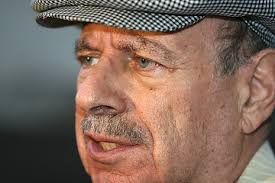www.aljazeerah.info
Opinion Editorials, November 2018
Archives
Mission & Name
Conflict Terminology
Editorials
Gaza Holocaust
Gulf War
Isdood
Islam
News
News Photos
Opinion Editorials
US Foreign Policy (Dr. El-Najjar's Articles)
www.aljazeerah.info
Big Business Strikes Back, in a New Form of the Class Struggle from Above, as Exemplified in Latin America By James Petras Al-Jazeerah, CCUN, November 6, 2018 |
 |
 |
|
|
Brazilian President-elect Jair Bolsonaro poses with military
police in the Rio de Janeiro neighborhood of Cidade de Deus, October 18, 2018 |
Big Business Strikes Back: The Class Struggle from Above
Introduction
Bankers, agro-business elites, commercial mega owners, manufacturing,
real estate
and insurance bosses and their financial advisers, elite
members of the ‘ruling class’,
have launched a full-scale attack on
private and public wage and salary workers, and
small and medium
size entrepreneurs (the members of the ‘popular classes’). The attack
has targeted income ,pensions, medical plans, workplace conditions,
job security, rents,
mortgages, educational costs, taxation,
undermining family and household cohesion.
Big business has weakened or abolished political and social
organizations, which
challenge the distribution of income and
profits and influence the rates of workplace
output.
In brief the ruling classes have intensified exploitation
and oppression through
the ‘class struggle’ from above.
We will proceed by identifying the means, methods and socio-political
conditions
which have advanced the class struggle from above and,
conversely, reversed and
weakened the class struggle from below.
Historical Context
The class struggle is the major determinant of the advances and
regression of the
interests of the capitalist class. Following the
Second World War, the popular classes
experienced steady advances in
income, living standards, and work place representation.
However
by the last decade of the 20th century the balance of power between the
ruling
and popular classes began to shift ,as a new ‘neo-liberal’
development paradigm became
prevalent.
First and foremost, the state ceased to negotiate and conciliate
relations between
rulers and the working class: the state
concentrated on de-regulating the economy,
reducing corporate taxes,
and eliminating labor’s role in politics and the division of
profits
and income.
The concentration of state power and income was not uncontested and
was not
uniform in all regions and countries. Moreover,
counter-cyclical trends, reflecting shifts
in the balance of the
class struggle precluded a linear process. In Europe,
the Nordic and
Western European countries’ ruling classes advanced
privatization of public enterprises,
reduced social welfare costs
and benefits, and pillaged overseas resources but were
unable to
break the state funded welfare system. In Latin America
the advance and
regression of the power, income and welfare of the
popular class, correlated with the
outcome of the class and state
struggle.
The United States witnessed the ruling class take full control of the
state, the
workplace and distribution of social expenditures.
In brief, by the end of the 20th century, the ruling class advanced
in assuming a
dominant role in the class struggle.
Nevertheless, the class struggle from below retained its presence, and
in some places,
namely in Latin America, the popular classes were
able to secure a share of state power –
at least temporarily.
Popular Power: Contesting the Class Struggle from Above
Latin America is a prime example of the uneven
trajectory of the class struggle.
Between the end of World War Two
and the late 1940’s, the popular classes were
able to secure
democratic rights, populist reforms and social organization. Guatemala,
Argentina, Uruguay, Brazil, Mexico, Venezuela were among the leading
examples. By
the early 1950’s with the onset of the US imperialist
‘cold war’, in collaboration with the
regional ruling classes
launched a violent class war from above, which took the form of
military coups in Guatemala, Peru, Argentina, Venezuela and Brazil. The
populist class
struggle was defeated by the US backed military-
business rulers who, temporarily
imposed US agro-mineral export
economies.
The 1950’s were the ‘golden epoch’ for the advance of US
multi-nationals and
Pentagon designed regional military alliances.
But the class struggle from below rose
again and found expression in
the growth of a progressive national populist
industrializing
coalition,and the successful Cuban socialist regime and its followers in
revolutionary social movements in the rest of Latin America
throughout the 1960’s.
The revolutionary popular class insurgency of
the early 1960’s was countered by the
ruling class seizure of power
backed by military-US led coups between1964-1976
which
demolished the regimes and institutions of the popular classes in Brazil
(1964),
Bolivia (1970), Chile (1973), Argentina (1976) , Peru (1973)
and elsewhere.
Economic crises of the early 1980s reduced the role of
the military and led to a
‘negotiated transition’ in which the
ruling class advanced a neo-liberal agenda in
exchange for electoral
participation under military and US tutelage.
Lacking direct military
rule, the ruling class struggle succeeded in muting the
popular
class struggle by co-opting the center-left political elites. The ruling
class did not
or could not establish hegemony over the popular
classes even as they proceeded with
their neo-liberal agenda.
With the advent of the 21st century a new cycle in the class struggle
from below
burst forth. Three events intersected: the global crises
of 2000 triggered regional
financial crashes, which in turn led to a
collapse of industries and mass unemployment,
which intensified mass
direct action and the ouster of the neo-liberal regimes.
Throughout
the first decade of the 21st century, neo-liberalism was in retreat. The
popular class struggle and the rise of social movements displaced
the neo-liberal regimes
but was incapable of replacing the ruling
classes. Instead hybrid center-left electoral
regimes took power.
The new power configuration incorporated popular social movements,
center-left
parties and neo-liberal business elites. Over the next
decade the cross-class alliance
advanced largely because of the
commodity boom which financed welfare programs,
increased
employment, implemented poverty reduction programs and expanded
investments in infrastructure. Post-neoliberal regimes co-opted the
leaders of the popular
classes, replaced ruling class political
elites but did not displace the strategic structural
positions of
the business ruling class.
The upsurge of the popular class struggle was contained and confined
by the center
left political elite, while the ruling class marked
time, making business deals to secure
lucrative state contracts via
bribes to the ruling center-left allied with the conservative
political elite .
The end of the commodity boom, forced the center-left to curtail its
social welfare
and infrastructure programs and fractured the
alliance between big business leaders and
center-left political
elites. The ensuing economic recession facilitated the return of the
neo-liberal political elite to power.
The big business ruling class learned their lessons from their
previous experience with
weak and conciliating neo-liberal regimes.
They sought authoritarian and, if possible
rabble rousing political
leaders, who could dismantle the popular organizations, and
gutted
popular welfare programs and democratic institutions, which previously
blocked
the consolidation of the neo-liberal New Order.
The Neo-Liberal New Order
The neo-liberal “New Order” differed substantially from the past in
several
significant features.
First neo-liberal programs
under the New Order were based on highly repressive
leaders – they
did not merely depend on ‘market discipline’ and state promoted
programs.
Authoritarian political regimes established a framework to
finance, protect and promote
the consolidation of neo-liberal
systemic changes.
Secondly, political ascendancy of the New Order relied on a coalition
of ruling class
elites, conservative upper middle-class property and
professional groups and downwardly
mobile lower middle classes
fearful of personal and economic insecurity and the
breakdown of the
old social order.
Thirdly, the New Order was led by a demagogic leadership that called
on direct
political intervention, by retired and active military and
police officials backed by armed
landowner militia , lumpen street
fighters ( private gangsters) willing to intimidate leftist
workers,
landless peasants and unemployed trade unionists.
Fourthly the New Order elites mobilized the mass base of religious
fundamentalists by
targeting ‘marginal groups’(gays, people of color,
feminists, immigrants etc) who were
portrayed as enemies of the
family, nation and religion.
Fifthly ,the New Order deflected popular discontent to leftist
corruption, immorality
and impotence to combat crime in the streets.
The New Order is built on perpetuating neo-liberal ruling elites by
destroying the
political, social and economic institutions and rules
of the previous electoral
order(‘democracy’).
In a word , big
business led class struggle from above was not interested in free market
‘reforms’, the want it all-power ,profits, and privilege-without
obligations, regulations or
constrains.
The Future of the Neo-Liberal “New Order”
The authoritarian New Order has gained powerful patrons in rulers
like US Presidents
Trump and Brazilian President Jair Bolsonaro. They
have neo-liberal allies in Argentina,
Central America , Europe ,
Asia, and the Middle East. They have embraced a powerful
message of
political-military bullying of traditional allies , economic warfare
against
dynamic competitors and a glorified vision of national
grandeur to its mass followers.
Initially, the business elites
prosper, the stock markets rise, taxes are lowered and
state
subsidies fuel euphoria and hopes among the masses that ‘their turn is
next’. Profits
and police state ‘law and order’, link the business
elite with the affluent middle class.
The combative popular classes
are demoralized and disoriented by failed leaders and
the retreat of
social movements and trade unions from the class struggle
In contrast
the international alliance of the authoritarian big business
neo-liberals has
a vision of global , regional and national power.
However sustaining their advance is conditional on dynamic economic
growth and
overcoming cyclical economic crises; on subverting class
struggle from below; on
finding substitute adversaries, as older
ones lose thru mystifying appeals.
The corruption of upwardly
mobile middle-class rabble rousers will disillusion their
voluntary
followers. Arbitrary police and military repression usually extends to
extortion
and intimidation beyond the drug slums to the middle and
working-class neighborhoods.
The authoritarian New Order usually
begins to decline through ‘internal rot’ – uber-
profiteering and
flagrant abuse of work.
The rightist rhetoric turns against itself as its followers engage in
invidious
distinctions. The ruling class looks to shed its
authoritarian shock troops and replace
them with technocrats., free
marketeers and malleable bourgeois politicians. The left and
center-left looks to attract a new generation of followers in the street
protests and seeks to
form alliances with readily available
opportunist politicians.
A new political cycle takes shape – but will a new popular class struggle emerge?
***
Share the link of this article with your facebook friends
|
|
|
|
||
|
||||||


